https://vndb.org/v12455
JP title: 相州戦神館學園 八命陣
Soushuu Senshinkan Gakuen Hachimyoujin (which we will refer to as Senshinkan for brevity) is Light’s big 2014 chuuni title and also the then-latest work of Dies irae / Kajiri Kamui Kagura author Takashi Masada, so you can probably imagine the excitement surrounding it. The game breaks with Dies irae’s “Shinza” setting and comfortably takes place in its own universe, with its own rules… and I gotta say, while the game never quite reaches Dies irae’s cosmos-shattering levels of grandeur, I still had quite a bit of fun playing through it. Read on to find out why!
Opening (Ten no Toki):
Opening (original):
(If you’re wondering… Ten no Toki is the the all-ages release. Unlike with Dies and KKK, though, the all-ages version has no additional chapters as far as I know.)
I won’t waste too much time explaining the basic premise, but essentially, the game is based around the idea presented in the story of Kantan, as well as lucid dreaming in general. The protagonist, Hiiragi Yoshiya, has lucid dreams every night, and even manages to invite his friends to partake in the dream and have some fun with their dream-powers, acting like superheroes and such. For a while, it’s all a game to them. Well, as you can imagine, shit hits the fan real fast and the group is forced to face off against seemingly impossible odds within the Kantan dreamworld, with the ultimate goal being its eighth layer, because those who reach this final layer are granted the right to take their dreams back into the real world.
There’s actually quite a bit more to the game than that, something you’ll probably realize the moment you start reading, but the mysteries surrounding the Kantan are for the reader to discover, so I naturally won’t go into the details here. Needless to say, I thought the storyline ended up being more interesting than I had initially expected. The likable main characters already make each scene really enjoyable (as many others have pointed out, the slice of life scenes are quite funny and the main characters are not as hopelessly overshadowed by the antagonists as in Dies), while the plot itself operates with a mystery you’ll only begin to fully unravel in the final route, despite some foreshadowing here and there. The story actually had some very exciting twists I didn’t see coming, which is always a pleasant surprise.
You’ll also encounter some social commentary regarding genders and the gradual deterioration of humanity, including bits that felt very much like a critique of the negative effects of social media (or the internet in general) in modern society. All in all, there’s some pretty interesting, thought-provoking stuff in there, and the antagonist’s motivations fall into that “y’know he kinda has a point on a certain level” category, which makes the whole thing more intriguing.
As for the characters, I thought they were pretty solid with some underdeveloped exceptions (Keira, I guess), and each of the heroines have their time to shine, so there’s no Kasumi route / got the short end of the stick syndrome. To be perfectly honest, I didn’t care much for Yoshiya, the same way I didn’t care about Ren in Dies irae — protagonists like Akane from Hanachirasu, for example, are far more fascinating imo, so Yoshiya’s 真面目-ness I didn’t care too much for. He gets points for being able to properly confess to the girl he likes without any kind of hetare bullshit to go with it, which is commendable in any protagonist. But other than that, he’s your typical heroic protagonist. In fact, since we’re talking about the guys, I personally perferred the other two male characters, Atsushi and Harumitsu. Both of them have their respective “this is my badass moment, buckle up” scenes, especially Harumitsu. Holy fucking shitballs, Harumitsu. The guy single-handedly outshines the rest of the cast in terms of sheer heroism. Like, it gets the point where I kept asking myself why Yoshiya was the protagonist and not Harumitsu, lol.
As far as the heroines are concerned, we have four: Manase Akira, Tatsunobe Ayumi, Gadou Rinko and Sera Mizuki. That’s also the order I recommend going through the routes, by the way. I know Mizuki is locked before you complete the other three, but I’m not sure about the others. Still, if you follow the above order, you’ll be fine, imo.
Akira is the kind of girl you could easily toss into the “combative tomboy” category at first glance, but as it turns out, she’s the one who hates fighting and conflict the most: a very kindhearted, sweet girl who wants to help others, which unsurprisingly ends up making her the primary healer of the group during their adventures in Kantan-land. Anyway, she’s just an absolute sweetheart and いい子 which is why she’s my favorite heroine as a love interest. I also found her relationship with her dad really adorable, and although she’s often labeled as a bit of a fathercon for comedic effect, there were some genuinely touching moments in her route — a route that, by the way, deals primarily with both her dad and Yoshiya’s dad Seijuurou (a cool character in the sense that you’ll be dying to find out wtf his deal is and why he acts the way he does), providing some key backstory for the latter and culminating in an ending that’s probably going to melt your heart. THAT FINAL CG MY GOD.
Ayumi’s an interesting case: she’s a gamer and a huge Shinza nerd. Yes, you heard that right: Dies irae and Kajiri Kamui Kagura are video games in the Senshinkan universe, and she’s a massive fan. In fact, there are some absolutely hilarious Dies/KKK references which make up some of the funniest scenes in the game, so if you’ve read all of Masada’s previous works before tackling Senshinkan… well, you’re gonna have a good time. But I digress. Ayumi is pretty funny as a side character and comic relief, but as a primary love interest, I just wasn’t really feeling it. Her route didn’t really do much for me, either, nor was I a fan of the way the final battle was handled. So overall, this was probably my least favorite bit in the game.
Rinko is my other favorite aside from Akira; a haughty ojou-sama and self-proclaimed rival to Yoshiya whose rivalry masks a clear infatuation with the guy. She also has a bunch of weird facial expressions, and despite her seemingly arrogant tone, displays a certain adorable fragility where she starts crying like a kid when people get the upper hand in an argument. She also goes to bed at 9PM like a good girl because all good girls go to bed at 9PM. Anyway, her bits are some of the funniest shit you’ll find in the game (including her H scene) and I almost don’t want to say too much so as not to spoil certain moments.
There is, of course, more to her personality than that, which is partially what her route dwells upon as one of its main themes. Speaking of her route, this is where things start getting heated: the stuff surrounding Yurika and Munefuyu that starts off here and later culminates in the final route is one of the more exciting bits of the VN, while Harumitsu also gets a really, and I do mean really awesome scene in this route.
Mizuki is the final girl who is kinda-sorta intended as the true heroine, and… honestly, most of the things I could say about her would get me straight to spoiler central, so it’s probably best if I don’t say anything. There’s a reason why she plays a key role in the prologue, let’s just leave it at that. Personality-wise, she’s what you might expect, but also not quite. What I mean is that despite all her “main girl” qualities, she’s actually pretty goofy/mischievous and is usually the first to back up Ayumi during her silly hijinks. I think this face says it all.
Mizuki’s route, by the way, is where Shit Gets Real and where the game starts gut-punching you with its twists. In fact, this is where the real meat of the story is, I feel; while the other three routes all have their own individual conclusions (with Akira’s being the most satisfying to me personally), they leave many questions unanswered and have a bit of a “Kei route ending” feel to them in a certain sense. Nonetheless… the true/final ending, while pretty nice, didn’t quite give me the same feeling of catharsis I experienced in Dies irae’s conclusion, and generally speaking, I don’t particularly remember any moments that could’ve really moved me the same way Dies did, which is a shame. There were no ultra satisfying epilogues, either, and the grand end felt more like a generic dating sim ending. Omnia Vincit Amor spoiled me too much, I guess.
By the way, I had no idea where to put this in the review but I have to bring it up somewhere. What is up with the constant Dutch angles in this VN. They’re overused to the point of being comical, like when an amateur filmmaker discovers some cool technique and keeps using it over and over again because he thinks it’ll make him look cool. Seriously, stop with the Dutch angles, please. They genuinely got annoying after a while. Speaking of things I’ve no idea where to put, let me quickly mention how the music in this is overall some of the best I’ve heard from Keishi Yonao. Dies and KKK both had some memorable bits but Senshinkan takes it to a whole new level, giving us tracks like Paraiso, Yehoshua, 傾城反魂香, 播磨外道 and a bunch of others that just get you in the mood instantly. It’s great stuff all around.
Either way, let’s move on to the antagonists! Or at least the ones I cared about the most: Amakasu Masahiko and Shinno Akikage. Amakasu’s intentions take a while to be fully revealed, and while he’s not the bastion of charisma Reinhard is, I found him pretty fascinating in his own right. Some of the more interesting social commentary comes from him, in fact. However, he doesn’t really have much screen time other than in the final route, so his presence is not particularly felt all that much, especially compared to someone like Reinhard.
Shinno is fucking hilarious, and this is 100% owed to his voice actor, who does a fantastic job with his delivery and intonation. Despite being a bit of a jokester, he does know how to be intimidating and downright ominous, and I loved that duality about him. In one moment you laugh at his outrageous/joking tone, in another he sends a chill down your spine, lol.
So my overall feelings on Senshinkan are pretty much “don’t expect another Dies and you’ll have fun”. I think Masada did a much better job with the main cast and their SoL this time around, but the unforgettable magic of the Reinhard/Mercurius duo could not be re-created, nor do we get crazy memorable characters like Eleonore, Beatrice, etc. with complex and tragic backstories that really made them feel painfully human. On the other hand, the story is somewhat less cliché in the sense that there’s an interesting mystery lurking in the shadows that might catch you by surprise. So yeah, Senshinkan was fun. Not quite as massive and well-developed as the magnum opus that is Dies irae, but a very solid, enjoyable chuuni VN in its own right, with some cool ideas behind it.
P.S. There’s also a sequel.
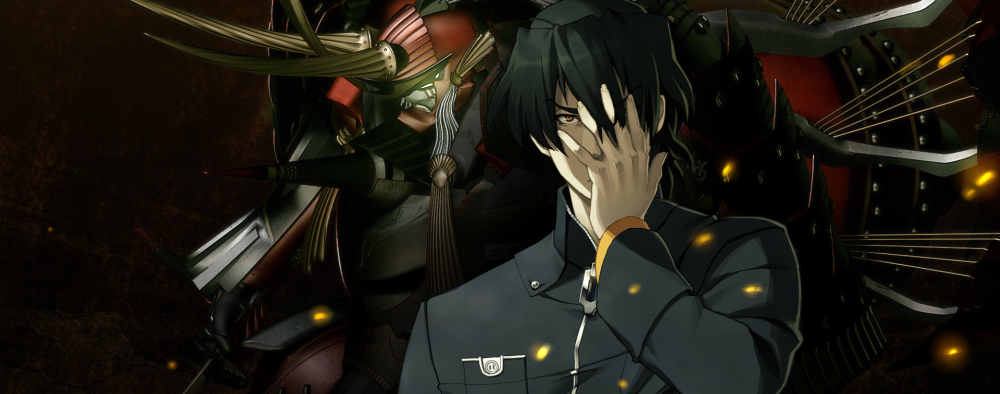
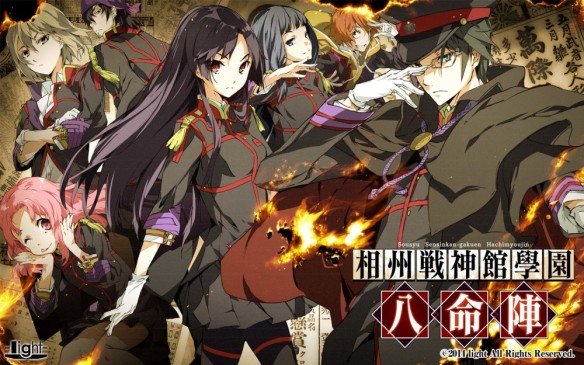


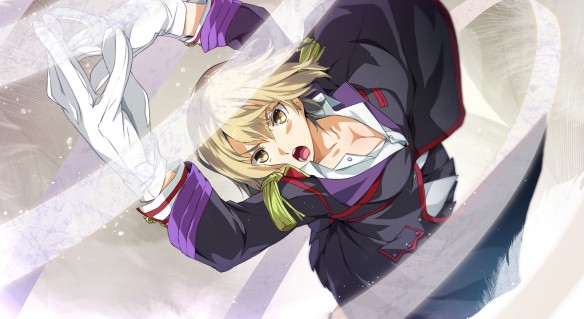
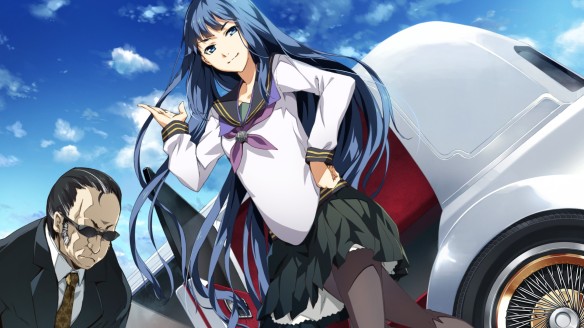

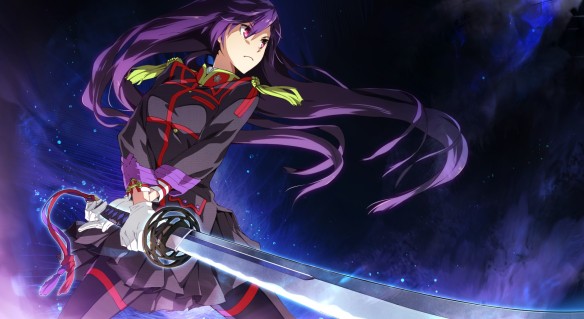
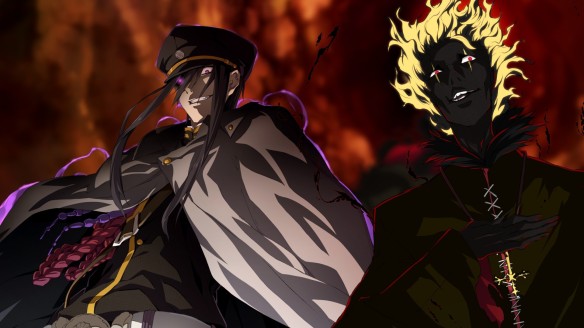
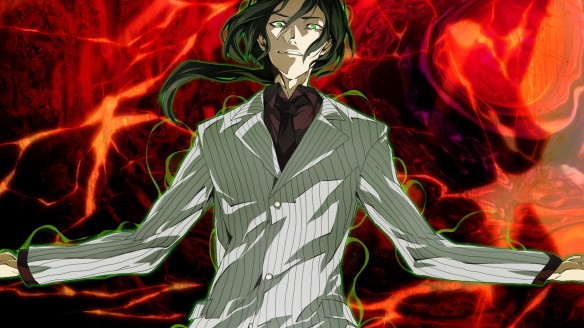
Pingback: [Review] Soushuu Senshinkan Gakuen Bansenjin | gareblogs